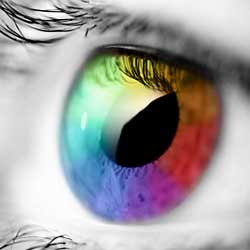Unleashing Vibrancy: A Step-by-Step Guide to Creating a Colorful Overlapping Letters Text Effect in Photoshop

Introduction:
Photoshop, a canvas of boundless creativity, invites artists and designers to explore diverse text effects that add flair and vibrancy to their projects. Among these, the Colorful Overlapping Letters Text Effect stands out as a dynamic and eye-catching technique that infuses energy into typography. This comprehensive guide will walk you through the step-by-step process of creating this visually stunning text effect in Photoshop, allowing you to unleash your creativity and captivate your audience.
Section 1: Setting Up Your Photoshop Workspace
1.1 Creating a New Document:
- Open Photoshop and create a new document by navigating to File > New. Choose your preferred dimensions, resolution, and background color for the canvas.
1.2 Setting the Background:
- Decide on the background color or texture for your composition. You can use a solid color, gradient, or even an image as the backdrop for your colorful text effect.
Section 2: Choosing Fonts and Text Placement
2.1 Selecting Fonts:
- Choose bold and stylish fonts that allow for clear visibility of individual letters. Fonts with a modern or decorative aesthetic work well for this effect. Experiment with different fonts to find the perfect match for your design.
2.2 Placing Text Layers:
- Use the Text tool (T) to add your desired text to the canvas. Each word or phrase should be on a separate text layer to facilitate individual adjustments. Experiment with size, spacing, and alignment to achieve the desired arrangement.
Section 3: Applying Base Colors to Text
3.1 Choosing Base Colors:
- Select a vibrant color palette that complements your design theme. Consider using bold and contrasting colors for each text layer to enhance the visual impact of the overlapping effect.
3.2 Applying Base Color to Text Layers:
- Double-click on each text layer to access the Layer Style options. In the Color Overlay section, apply the chosen base color to each text layer. This establishes the foundation for the overlapping letters.
Section 4: Duplicating and Arranging Text Layers
4.1 Duplicating Text Layers:
- Duplicate each text layer by right-clicking on the layer and selecting “Duplicate Layer.” This creates identical copies of each word or phrase, allowing you to experiment with different arrangements.
4.2 Arranging Overlapping Layers:
- Shift and reposition the duplicated layers to create an overlapping effect. Experiment with layer order, rotation, and placement to achieve a visually dynamic composition. The goal is to create an engaging and colorful interplay between the letters.
Section 5: Adding Layer Styles for Depth and Dimension
5.1 Drop Shadow for Depth:
- Apply a subtle Drop Shadow to each text layer to create a sense of depth and separation. Adjust the opacity, distance, and size of the shadow to achieve a balanced and realistic effect.
5.2 Inner Shadow for Contrast:
- Enhance the contrast between overlapping letters by adding an Inner Shadow. Experiment with settings like opacity and distance to achieve a visually appealing balance.
Section 6: Incorporating Gradient Overlays
6.1 Creating Gradient Overlays:
- Access the Layer Style options and apply Gradient Overlay to each text layer. Experiment with gradient colors and blending modes to add a dynamic and gradient-rich appearance to the text.
6.2 Adjusting Gradient Positions:
- Fine-tune the position and angle of the gradient overlay to complement the overlapping arrangement. This step adds depth and dimension to the colorful text effect.
Section 7: Exploring Blending Modes for Fusion
7.1 Blending Modes Overview:
- Experiment with different blending modes for each text layer to explore how they interact with one another. Modes like Overlay, Multiply, and Screen can produce unique color combinations and intensify the overlapping effect.
7.2 Finding the Perfect Blend:
- Adjust the opacity and fill settings of each text layer to achieve the perfect blend of colors and transparency. This step enhances the cohesion of overlapping letters while preserving the vibrancy of the individual colors.
Section 8: Fine-Tuning and Refining Details
8.1 Refining Letter Overlaps:
- Zoom in and scrutinize the finer details of the letter overlaps. Make precise adjustments to ensure a seamless and visually pleasing fusion between letters. Pay attention to spacing, alignment, and overall composition.
8.2 Adding Texture or Patterns:
- For an extra layer of visual interest, consider adding textures or patterns to individual text layers. Experiment with layer styles like Pattern Overlay or apply custom textures to enhance the overall aesthetic.
Section 9: Final Touches and Exporting
9.1 Global Adjustments:
- Evaluate the overall composition and make any necessary global adjustments. This may include color correction, contrast adjustments, or additional effects to fine-tune the final result.
9.2 Exporting the Artwork:
- Once satisfied with the colorful overlapping letters text effect, export the artwork in your preferred format (e.g., JPEG, PNG). Consider the intended use and resolution requirements to ensure optimal quality.
Conclusion: A Symphony of Colors Unveiled
Creating a colorful overlapping letters text effect in Photoshop is a journey of artistic exploration and visual storytelling. This step-by-step guide has equipped you with the tools and techniques to unleash your creativity, allowing you to craft dynamic and captivating compositions. As you experiment with fonts, colors, and layer styles, you’ll unveil a symphony of colors that transforms ordinary text into a vibrant and visually arresting masterpiece. Welcome to the realm of Photoshop wizardry, where each letter becomes a brushstroke in your canvas of creativity.







